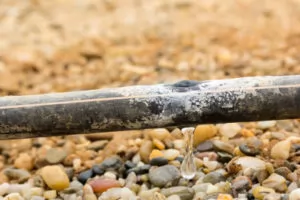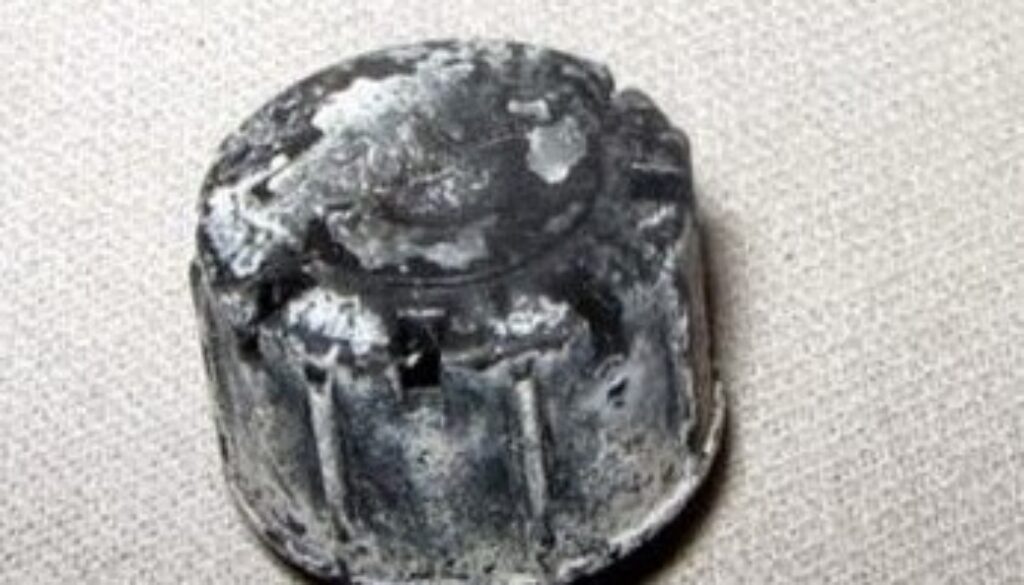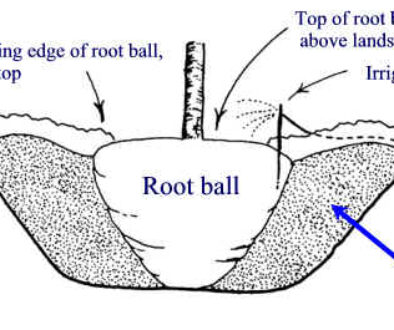What’s That Crusty Buildup on my Arizona Irrigation Drip?
Have you ever looked at your yard on a hot Arizona summer day only to notice that one of your plants is suddenly wilted and dying after being perfectly fine for years? One of the most common problems we experience with our drip irrigation systems in the Valley of the Sun is the eventual, and often inevitable, buildup and eventual clogging of the drips at the end of spaghetti lines by minerals.
Why Does This Happen?
The buildup of minerals on drip emitters is a problem across the world, though this problem is especially severe in the Sonoran Desert and other dry parts of the United States. Why does this happen, though?
First of all, most of the time the minerals that accumulate on drips are calcium carbonate and other simple salts. These minerals are found in trace amounts in most water supplies as part of the natural world. These salts deposit more with higher pH, and Arizona’s alkaline soil creates alkaline water, leading to more calcium buildup wherever possible. Add onto that the fact that most of our water comes from canals and goes through pretty heavy treatment before being dispersed to residential neighborhoods, and you end up with a lot of dissolved calcium carbonate. It’s not harmful to animals, in fact, if you’ve ever eaten a TUMS or other antacid, you’re consuming about 1000 milligrams of calcium carbonate per tablet. It’s easily soluble in water, which leads to the problem with getting water to plants.

As the temperature increases during the spring and summer, the rate of evaporation increases rapidly. As water evaporates faster, any trace amounts of calcium carbonate and other salts lingering on a drip emitter at the end of the scheduled watering cycle will be more likely to stick to the emitter rather than fall to the ground. Repeat this cycle over and over again as spring turns to summer, with an already heightened level of salts in the water to begin with… and by mid-June, you’ve probably got some clogs if you haven’t paid attention.
What Can Be Done About It?
Unfortunately, there’s not really a permanent solution to this issue as long as we continue using drip irrigation. There’s always going to be a mineral presence in our water supply, especially in Arizona. Our Maintenance Crews make sure to check drips for clogging regularly to prevent problems from arising. In your own yard, the best casual strategy to prevent clogging is to go out to as many drips as you can find and twist the adjustable knobs to break apart potential buildup. Other than that, you’d have to find a way to change the pH of the water. This is a challenge that Arizona communities have been contending with for a long time, to varying degrees of success. With planning and approval by community boards, we sometimes offer sulfuric acid dilutions to decrease pH for community water supplies, thus decreasing salt accumulation. But for your home, unless you have a personal well, you’ll likely have to go through your local government for any inquiries into decreasing the pH of the local water supply.

Overall, the buildup of calcium carbonate and other salts is a part of life for anything relating to Arizona water. It can cause these clogs, and it can even cause absorption and evapotranspiration issues for many plant species, even native ones. That’s why we apply gypsum to turf spaces – gypsum reacts with salt buildups and breaks them down, allowing for water, air, and other nutrients to flow.
ELS Maintenance makes sure all community’s drip emitters are regularly unclogged and does whatever it can to lessen the frequency of future buildup. If you know of a community or commercial property looking for a new landscaping company, email us at contactus@evergreenaz.com and we’ll get started!




